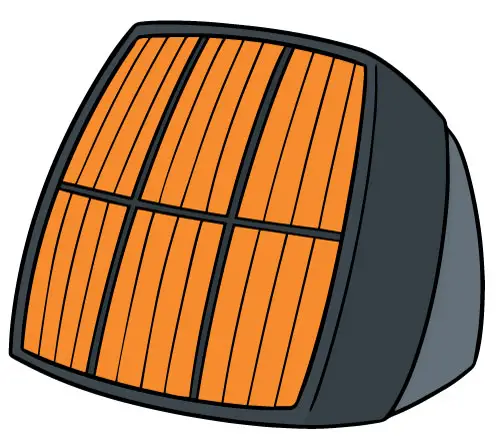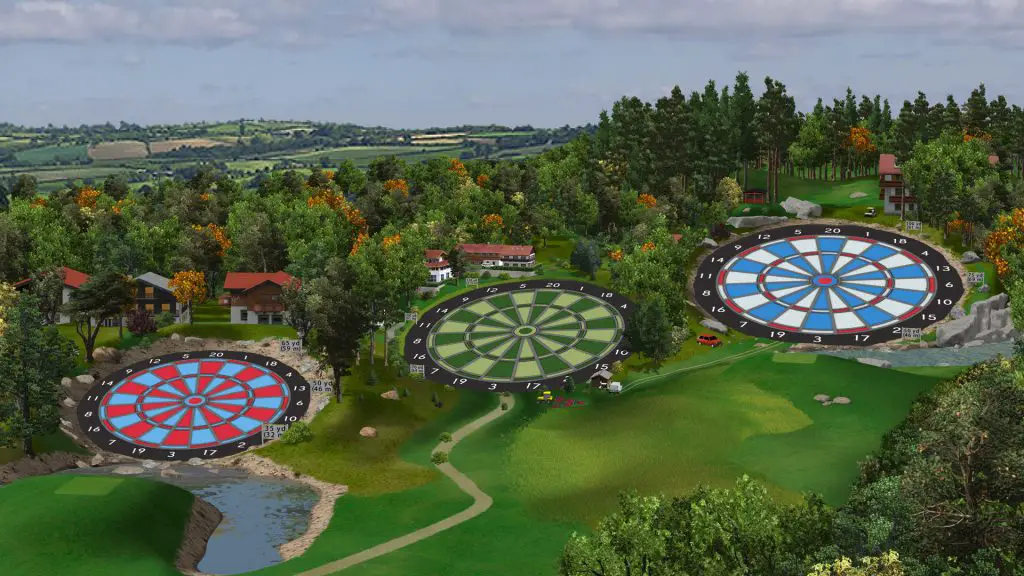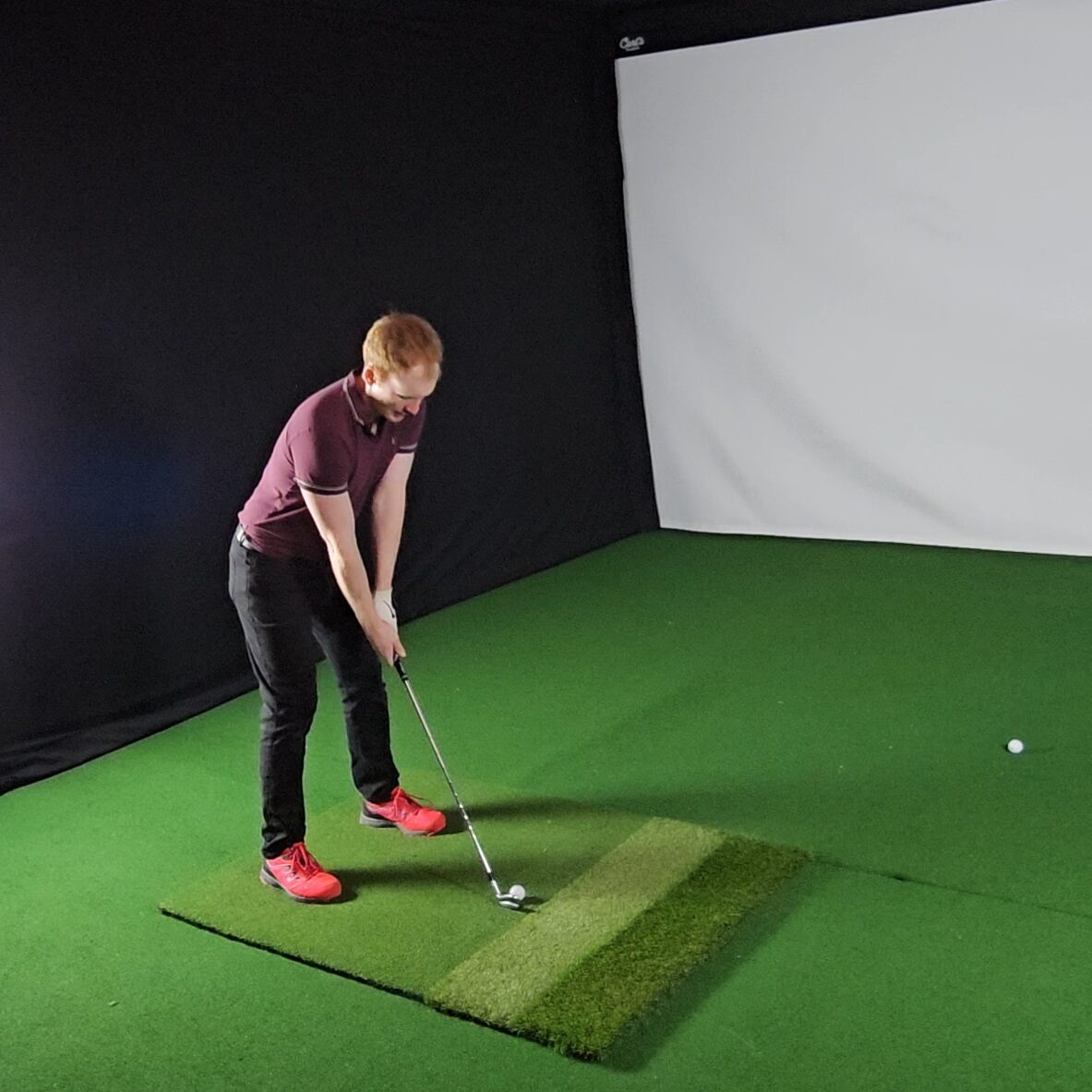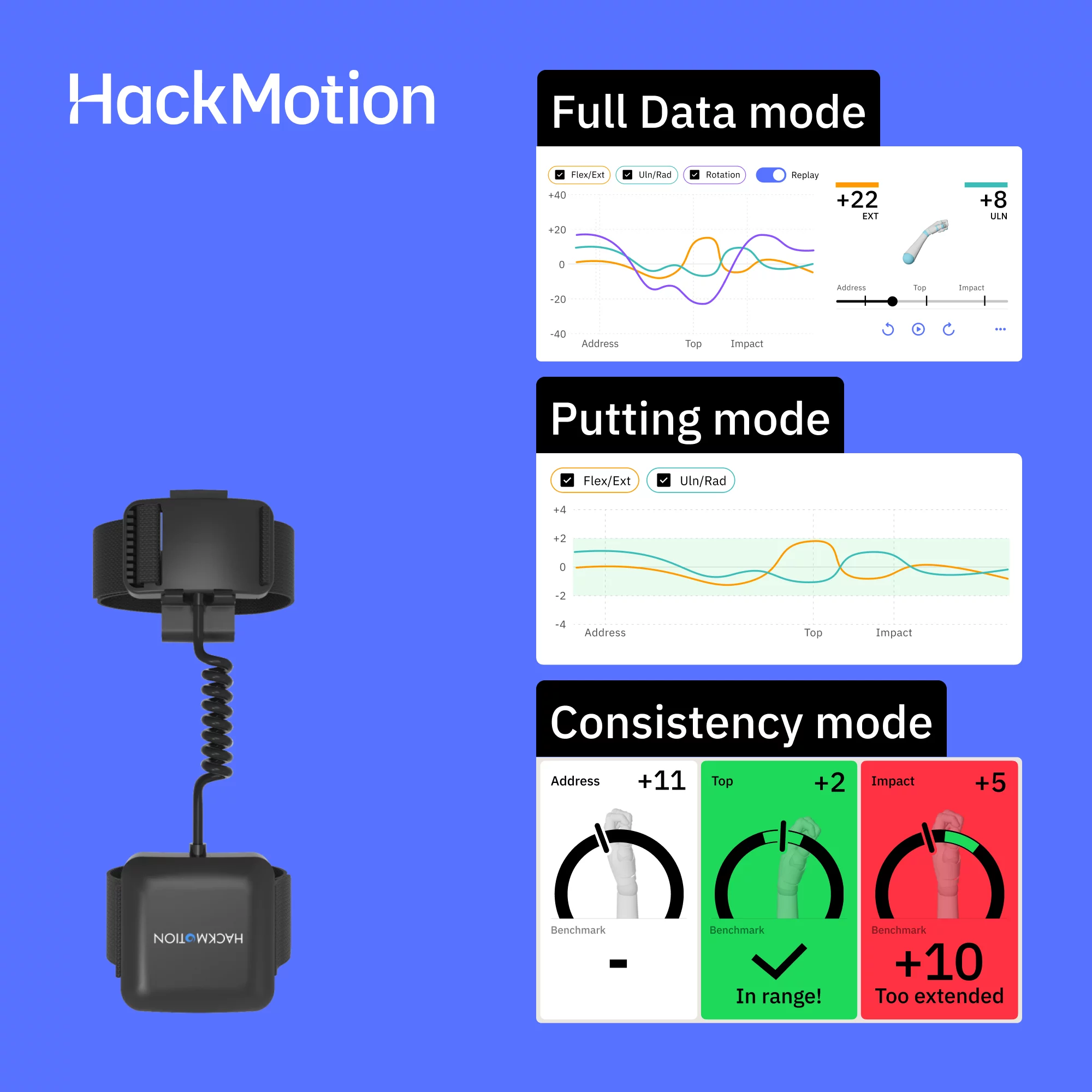Golf Simulator Heating is extremely important, and an often overlooked aspect of a golf simulator build. No-one wants to spend thousands on a golf simulator to find that they never use it because it’s just as cold as outside! The kids won’t want to play golf with you and the room will accumulate all your clutter just like a garage. Let’s warm up your golf simulator room now!
You can heat up your simulator room by reducing passive heat loss, such as adding insulation to walls and ceilings, using thermal curtains, and making improvements to doors and windows. You should also use methods of active heating such as portable radiators or extending your home heating system.
In this article, you will learn the main causes of heat loss from a golf simulator room and 11 tips to warm up your golfing room!

Why Golf Simulators Get Cold
A golf simulator room can be cold and lose it’s heat easily just like any other room in the house. There are many different types of spaces used for a golf simulator, from large main rooms in a home to a garage, shed or outbuilding.
Golfers live in a wide variety of climates too. Heating your golf simulator room will be more important for those living in Michigan, Canada, and Scotland than it is for those in Arizona. You need your golf simulator space to hold adequate warmth or an evening practice session in January just won’t be possible.
The temperature of a golf simulator room is determined by three things:
- The ambient temperature outside at the time
- Any active heating methods being used
- Heat loss from the room (via draughts, poor insulation or even holes in the roof, floor or walls)
You can’t do anything about the temperature outside unless you move house, you can however actively heat your golf simulator and reduce any passive heat loss.
How to heat your golf simulator
You need adequate heating in a garage golf simulator, otherwise you will avoid using it, defeating the point in it’s construction in the first place. The whole idea of a golf simulator is that you can use it all year round. Why spend several grand on a amazing golf simulator that you don’t use because your garage is too cold? My garage is freezing cold in winter, if my simulator was in my garage I think I would struggle to use it unless I aggressively heated it.
So, what are the options for heating your garage golf simulator?
- Active warming methods
- Reduction in passive heat loss
- Wearing warm clothes
We’ll now cover all of these options in detail. Some are easier to achieve and others are more expensive and involved, the best options for your own golf simulator space depend solely on your own situation. I recommend asking a professional for advice if you’re planning any alterations to the house structure itself.
Central Heating
If your golf simulator room is inside the house, you may benefit from having your central heating system present to just turn on and off. Often though this is not the case for golf simulators in rooms off to the side in extensions or garages. It might be an option to have a heating engineer extend the pipework to fit a radiator in your golf simulator room, though this is dependant on the setup of your particular home.
Electric Heaters
Electric heaters can warm any golf simulator space, most are portable and can just be plugged in, giving heat quickly. You need to ensure that the heat doesn’t just rise and leave the space via holes around the door or roof, or through poor insulation.
You must also be very careful with these heaters from a fire risk perspective. Never leave them on unattended. You should also make sure that your impact screen, blackout curtains and other flammable materials are well away from them, ensure too that they have their own plug socket and are not tagged onto an adapter.

Losing Heat from Doors and Windows in your Golf Simulator
Doors and windows can be a massive source of heat loss from a golf simulator space, especially in garages with rolling doors. These structures can have holes in the top to allow the door itself to roll without folding on itself, and heat can just flow out. You may also have thin and rickety windows which let draughts stream through.
In new construction, I recommend prioritizing build quality to allow the space to hold its heat well. This would include properly fitted non-rolling doors and windows. You could even add double glazing to keep even more warmth inside.
Large, heavy thermal curtains can be a great way of preventing heat loss too, as can floor based draught excluders. These are another source of fire risk though so be careful with them.
Insulate your Golf Simulator
You should really think about insulating your golf simulator space, either as a new installation or improvements to a current setup.
Heat can also escape through the roof if your simulator is in a simple shed or outbuilding, you should insulate the roof as long as you have the space and headroom to accommodate it! Insulation can act as protection for the actual walls and ceilings too as it’s often a soft and light material that will take much of the energy of a poorly struck golf ball.
Insulation can be a scary task for those who aren’t experienced in home DIY. However, the heating losses from the space can be dramatically reduced with adequate insulation. Check out excellent video from April Wilkerson for an example of garage insulation. A quick YouTube search has lots of similar how-to videos.
Other Types of Golf Simulator Heating
There are always other types of heating systems available, such as underfloor heating. This is usually a more expensive option that can be great for new constructions. I’d love a nice warm floor to stand on in my simulator when practicing putting in my pyjamas. I probably wouldn’t feel it as much in my golf shoes though. You can learn more about underfloor heating here.
Warm golf clothes and Warm Up Routines
Winters in your home golf simulator give ample opportunity to test lots of cold weather golf clothing. You’ll get your money’s worth out of that expensive golf jacket!
Once you’ve swung the club a few times you’ll warm up a little, but hopefully, the options above will make it a warmer golfing experience than you’d have out in the cold. I like to wear my thermal underlayer sometimes when it is cold in the simulator room too.
A solid golf warm up could also include a proper 5-10 minute warm-up workout, which will improve your flexibility and ability to practice effectively.
Don’t Forget – Power Supply in a Golf Simulator
Another often forgotten consideration in a golf simulator is power supply. Of course you’d expect most golfers will ensure there is power to the room, but how many sockets are there in your space?
I really recommend you ask a certified electrician to install up to four extra sockets in your golf simulator room. The following items all need a power socket in a golf simulator, sure you’ll not use all of them at once but you’ll use most of them concurrently:
- Computer
- Monitors, TVs, Screens
- Projector
- Charging for Launch Monitior
- Charging for any other device
- Cameras
- Heaters
- Spotlights and any lights not connected to mains switches
- Security products
- Fridges for Beer 😀
As you can see, you will need several plug sockets available and it is definitely not ideal to rely on multiplug adapters all the time. These can present a fire risk, especially when used in the vicinity of an impact screen, blackout curtains, and golf mat.

Heating in Different Types of Golf Simulator Spaces
Heating a Garage Golf Simulator
If you’re actually building a new garage, consider options including underfloor heating, a solid door without exposed gaps, and extensive insulation. Some of these options will be quite expensive so it depends on your situation.
Insulation can represent a daunting task for those who aren’t experienced in home DIY, and it can also take up extra space. However, the heating losses from the space can be dramatically reduced with adequate insulation. Check out this link for an example of garage insulation. A quick Youtube search has lots of similar how-to videos.
You should try and insulate all around the garage door, though this can be tricky if you have a rolling door as there are often deliberate gaps at the top. The door can be the main source of heat loss in your garage, and there are things you can do to reduce it. Take a look at this video for an example of this. Rolling garage doors are harder to insulate properly, I recommend taking advice from a professional if you’re in this position.
Thermal curtains in golf simulators are great options (though keep them away from your heaters and radiators). If you’re struggling with insulating the door, or eliminating another obvious source of heat loss, consider hanging large heavy thermal curtains from roof to ceiling around this area. This will give added protection against ricocheting shots too.
Many people have to resort to using portable garage heaters in order to use their golf simulator in the winter as we discuss above. The heat generated by these heaters will of course only last for your golf session and will dissipate through any existing sources of heat loss in the garage.
If you have a central heating system in the house you could ask a certified heating engineer to extend the system into the garage, assuming the pipework allows it. This will provide an extra heating option that can be used whenever required.
You can learn lots more about the practicalities of building a golf simulator in a garage here in my dedicated article.

Heating a Golf Simulator Shed
Golf simulator sheds are particularly difficult to get toasty and warm, especially if the ambient temperature outside is really cold. Sheds are often wooden and have poor insulation and even gaps through which warm air can stream out. The temperature will quickly equalize with outside.
Larger sheds can accommodate more insulation without sacrificing actual space for you to swing. You will also ideally have power to the shed though many golfers just have a simple hitting bay in their shed. Power will allow you to add options like portable heaters but you need to keep everything safe to avoid an expensive fire.
For many golfers, a shed is the only option to facilitate the construction of the dream golf simulator, and practical issues like keeping warm come along with that. You can learn lots more about golf simulator sheds and their key challenges here in my dedicated article.

Heating a Golf Simulator Basement
Golf simulators in basements can struggle with too much heat or too little. Sure, the earth all around the basement acts as a great insulator for heat loss (so when you use active heating methods the heat should stick around) but being underground can mean that the average unheated temperature in there is lower.
Again, you might be able to extend your central heating system into the basement if it doesn’t already cover it. You’ll also need to consider fire risk with any portable heater you choose to use and you should ensure you have enough sockets down there.
Check out my dedicated article all about basement golf simulators here.

Why do you need a warm golf simulator room?
You will practice less in a cold golf simulator
Trust me, if your golf simulator room is cold, you won’t practice very often. The whole idea of a home golf simulator is that you have access to your own personal golf practice facility and can enjoy playing rounds on simulated courses from around the world.
You won’t want to spend hours in there doing this if it’s cold, you’ll find other things to fill your limited free time with. It will be harder to motivate yourself to go and practice before or after work, especially at night.
Conversely, a lovely warm space in which you can relax, have a beer, play some golf and spend time with the kids is the absolute goal, isn’t it?
It’s more fun when it’s not freezing in your simulator
Your golf simulator will be so much more fun when it’s toast and warm. You’ll also be more keen to invite friends over to play (restrictions allowing). Your practice sessions will be longer, you’ll do more drills, practice more shots and get better more quickly.
The Kids will enjoy it more if its warm
Kids won’t want to go play, let alone practice, in a freezing cold golf room. They’ll also be more likely to use and enjoy the space for other reasons like playing games or watching movies on the big screen. I always think it’s great to get kids involved with a golf simulator, spending time doing something you both enjoy is really fun! They’ll be more likely to want to play golf outside too!
Check out Creative Golf 3D, which is a simulation software program with loads of fun games for kids!

Conclusion
I hope you’ve found this article helpful in your quest for a toasty and warm golf simulator room. Remember, the most important things are to reduce passive heat loss from the space, methods of active warming and ensuring fire safety.
You can reduce passive heat loss through adjustments to poor window, door, and roof design, insulation, thermal curtains, and draught exclusion. Portable electric heaters are great methods of active warming but the ideal solution is to extend a home central heating system into your space if at all possible.
Good luck in your golf simulator build! Please check out my related articles below!
Putting with Hackmotion – Step by Step Guide
HackMotion in a Golf Simulator: All the Data you need!
ABOUT THE AUTHOR

Hello! My name is Alex and it is my mission to bring you all the information you need to build your own home golf simulator! I hope mygolfsimulator.com helps you on your journey to better golf at home!
LEGAL INFORMATION
On this site, you'll find articles on all aspects of building a golf simulator. I will also link to other sites where you can buy some of the simulator components. Some of these links may be affiliate links, which means if you click them I gain a small commission at no extra cost to you. This really helps out me and my site so thank you in advance! mygolfsimulator.com and all related social media accounts are property of Awonline LTD.














